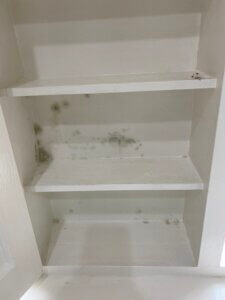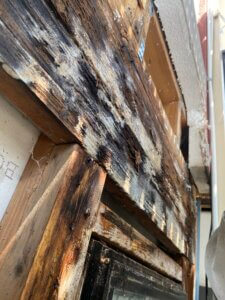Mould Remediation Services | Mould Prevention Practices for New Construction
Mould Remediation Services | Mould Prevention Practices for New Construction
Key Takeaways
- Proper Site Preparation: Ensuring proper drainage and dry ground before beginning construction is essential to prevent mould.
- Use of Mould-Resistant Materials: Incorporating materials such as mould-resistant drywall and paints helps significantly reduce the potential for mould growth.
- Moisture Control Measures: Keeping the construction site dry through the use of dehumidifiers, and fans, and ensuring all wet materials are dried before use is crucial.
- Effective HVAC Installation: Installing high-quality HVAC systems with dehumidification capabilities is vital for controlling indoor humidity levels and preventing mould.
- Regular Inspections: Conducting regular moisture checks during construction with advanced tools like infrared technology helps in the early detection and prevention of moisture-related issues.
Summary
This article outlines essential mould prevention strategies for new construction, emphasising the importance of using mould-resistant materials, maintaining a dry construction site, and installing effective HVAC systems. It highlights the need for careful site preparation, regular moisture inspections, and educating construction teams on mould risks. These practices ensure building durability, improved air quality, and reduced maintenance or mould remediation services costs, ultimately enhancing property value.
In the dynamic world of new construction, the threat of mould growth poses a significant challenge, yet it also presents an opportunity to implement preventive measures from the ground up. Understanding and integrating mould prevention strategies during the construction phase not only ensures the longevity and sustainability of a building but also significantly enhances indoor air quality and the health of its future occupants.
Understanding the Risk of Mould in New Construction
Mould thrives in environments where moisture and organic materials are present. In new construction, this can typically occur due to exposure to the elements, the use of wet building materials, or insufficient drying processes. The risk is compounded if the building site was previously exposed to water accumulation or if the construction phase spans through varying seasons, particularly those with high humidity.
Critical Strategies for Mould Prevention
To effectively prevent mould and mould remediation services in new construction, several strategies can be systematically applied throughout the building process:
- Proper Site Selection and Preparation: Choosing a construction site requires careful consideration of natural drainage patterns and the presence of any water bodies. Adequate site preparation, including the installation of proper drainage systems and ensuring that the ground is dry before construction begins, is vital.
- Selection of Mould-Resistant Materials: Utilising mould-resistant building materials can drastically reduce the potential for mould growth. Materials such as mould-resistant drywall, paints, and treated woods are specifically designed to withstand moisture and inhibit the growth of mould spores.
- Moisture Control During Construction: Maintaining a dry construction site is imperative. This involves covering building materials in transit and on-site, using dehumidifiers and fans to circulate air, and ensuring that any concrete, masonry, or plaster is completely dry before proceeding with the next phase of construction.
- Effective Design Elements: Architectural designs that include sloped roofs, overhangs, and proper landscaping can help direct water away from the building structure. Interior design elements that promote airflow, such as adequate venting in kitchens, bathrooms, and laundry areas, are crucial for moisture control.
- Quality HVAC Systems: Implementing high-quality heating, ventilation, and air conditioning (HVAC) systems with built-in dehumidifiers can control indoor humidity levels effectively. Proper sizing and installation of these systems are crucial to ensure they operate efficiently.
- Regular Inspection and Testing: Throughout the construction process, regular inspections should be conducted to check for water intrusion and condensation issues. Employing infrared technology can help detect ‘invisible’ moisture issues that are not apparent to the naked eye.
- Education and Training for Construction Teams: Ensuring that all personnel involved in the construction process are aware of the importance of mould prevention and are trained in the specific practices to minimise mould risk is fundamental. Awareness and proper training can prevent inadvertent practices that contribute to moisture accumulation.
Long-Term Benefits of Mould Prevention in Construction
Implementing these mould prevention strategies in new construction projects delivers significant long-term benefits:
- Enhanced Building Durability: Buildings constructed with mould prevention in mind endure less structural damage over time, preserving their integrity and functionality.
- Improved Indoor Air Quality: By preventing mould growth, the air quality within the building remains high, contributing to healthier living and working environments.
- Increased Property Value: Properties known to have incorporated mould preventive measures are often more appealing to buyers and renters, potentially increasing their market value.
- Reduced Maintenance Costs: The costs associated with post-construction mould remediation services can be substantial. By implementing preventative measures early on, these costs are significantly reduced.
In conclusion, integrating mould prevention into new construction is not merely about adhering to regulations—it’s about proactive stewardship of the built environment, ensuring that new developments are safe, sustainable, and secure for all occupants. By focusing on thorough planning, using the right materials, and adhering to best practices, the construction industry can effectively mitigate the risks associated with mould and limit the need for mould remediation services.
FAQs
What exactly are mould remediation services?
Mould remediation services involve the identification, containment, and removal of mould from indoor environments, followed by actions to prevent its recurrence. This service typically includes assessing the extent of mould damage, using specialised equipment to safely remove mould, and treating areas to inhibit future growth.
How do I know if I need mould remediation services?
If you notice visible mould, experience a persistent musty smell, or have recently had water damage, it may be necessary to seek professional mould remediation services. Additionally, if building occupants are experiencing health issues such as allergies or respiratory problems that may be related to mould, a professional assessment can determine the need for remediation.
Are mould remediation services safe for my home and health?
Yes, when performed by certified professionals, mould remediation services are safe and effective. Professionals use containment methods to prevent the spread of mould spores during removal, employ HEPA filtration, and follow strict safety protocols to protect the health of the occupants and the integrity of the property.
Why Choose Us?
AllAces Cleaning & Restoration has over 35 years of industry experience offering extensive mould remediation services across Brisbane, Melbourne, Sydney and surrounds. Our IICRC-certified technicians are equipped to return your site to a pre-loss condition, utilising the latest technology and equipment.


